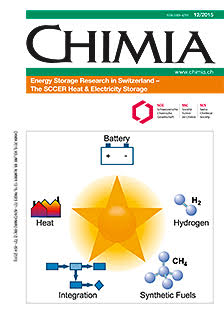Redox Flow Batteries, Hydrogen and Distributed Storage
DOI:
https://doi.org/10.2533/chimia.2015.753Keywords:
Electrical energy storage, Hydrogen, Redox flow batteriesAbstract
Social, economic, and political pressures are causing a shift in the global energy mix, with a preference toward renewable energy sources. In order to realize widespread implementation of these resources, large-scale storage of renewable energy is needed. Among the proposed energy storage technologies, redox flow batteries offer many unique advantages. The primary limitation of these systems, however, is their limited energy density which necessitates very large installations. In order to enhance the energy storage capacity of these systems, we have developed a unique dual-circuit architecture which enables two levels of energy storage; first in the conventional electrolyte, and then through the formation of hydrogen. Moreover, we have begun a pilot-scale demonstration project to investigate the scalability and technical readiness of this approach. This combination of conventional energy storage and hydrogen production is well aligned with the current trajectory of modern energy and mobility infrastructure. The combination of these two means of energy storage enables the possibility of an energy economy dominated by renewable resources.Downloads
Published
2015-12-16
Issue
Section
Scientific Articles
License
Copyright (c) 2015 Swiss Chemical Society

This work is licensed under a Creative Commons Attribution-NonCommercial 4.0 International License.
How to Cite
[1]
Chimia 2015, 69, 753, DOI: 10.2533/chimia.2015.753.







